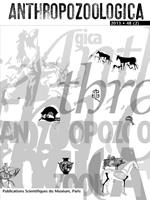In 2004 the Moon Pyramid Project uncovered Burial 6, a massive offering cache at the core of the monument located at Teotihuacan's central ceremonial precinct. This dedicatory chamber included the remains of over fifty animals, the majority representing the most dangerous carnivores on the landscape such as eagles, felines (jaguars and pumas), canines (wolves, coyotes and hybrids between wolves and dogs) and rattlesnake. Faced with this extraordinary faunal assemblage, we investigate the dynamic ritual processes which took place during the dedication ceremony. We reconstruct not only the chaîne opératoire, the acquisition, preparation, use and deposition of each animal, but also attempt to recreate individual life histories of some of the animals deposited in this burial. This type of analysis allows us to appreciate and understand the truly complex types of interactions the Teotihuacanos had with these highly symbolic animals; including the practice of animal management and captivity within the urban center. This study demonstrates the heterogeneity of the animal population interred in the offering chamber, which involved both wild and tamed animals sacrificed alive as well as faunal products manipulated and prepared extensively prior to their deposition. Such a reconstruction of the ritual processes prompts us to question the significance of such a deposit within the context of the arising metropolis at Teotihuacan.
BioOne.org will be down briefly for maintenance on 17 December 2024 between 18:00-22:00 Pacific Time US. We apologize for any inconvenience.
How to translate text using browser tools
1 December 2013
Animal Management, preparation and sacrifice: reconstructing burial 6 at the Moon Pyramid, Teotihuacan, México
Nawa Sugiyama,
Raúl Valadez,
Gilberto PéRez,
Bernardo RodríGuez,
Fabiola Torres
ACCESS THE FULL ARTICLE
It is not available for individual sale.
This article is only available to subscribers.
It is not available for individual sale.
It is not available for individual sale.

Anthropozoologica
Vol. 48 • No. 2
December 2013
Vol. 48 • No. 2
December 2013




